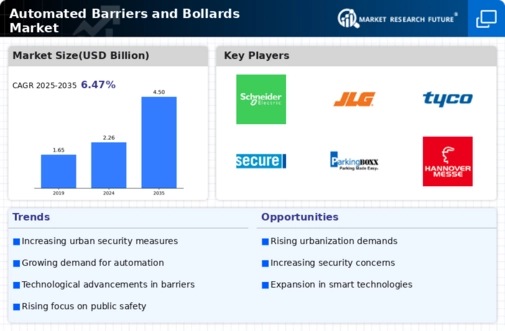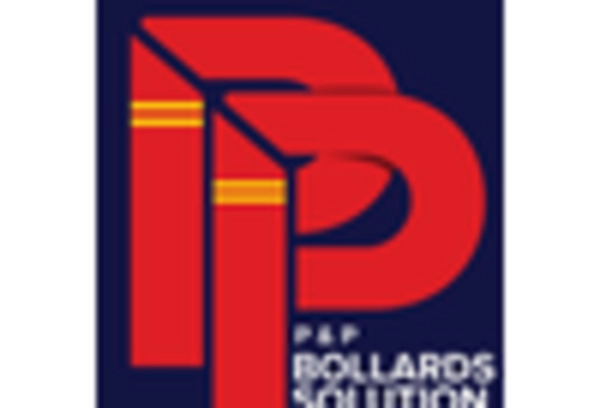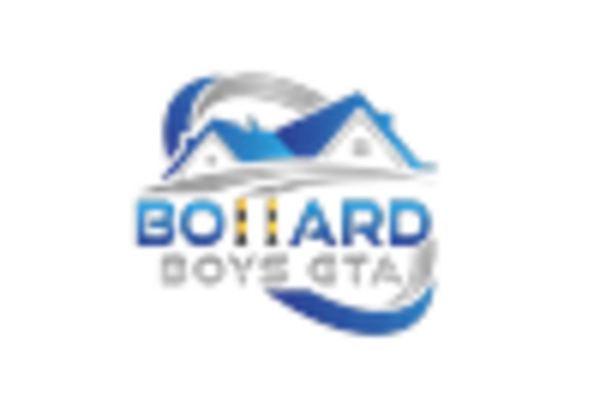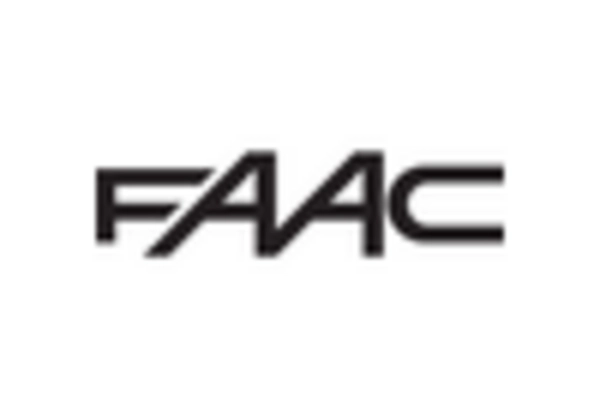Rising Security Concerns
In an era marked by heightened security concerns, the Automated Barriers and Bollards Market is witnessing increased adoption across various sectors. The need to protect critical infrastructure, public spaces, and private properties from unauthorized access and potential threats is paramount. Governments and organizations are investing in advanced security measures, including automated barriers and bollards, to mitigate risks. According to recent data, the market is expected to reach a valuation of approximately $3 billion by 2026, driven by the growing emphasis on safety and security. This trend is particularly evident in urban areas, where the density of population and assets necessitates robust security solutions. The increasing frequency of security breaches further underscores the importance of investing in automated systems to enhance protection.
Technological Advancements
The Automated Barriers and Bollards Market is experiencing a surge in demand due to rapid technological advancements. Innovations such as smart sensors, automated control systems, and integration with IoT devices enhance the functionality and efficiency of these security solutions. For instance, the incorporation of AI-driven analytics allows for real-time monitoring and adaptive responses to security threats. This technological evolution not only improves safety but also streamlines operations, making it easier for businesses and municipalities to manage access control. As a result, the market is projected to grow significantly, with estimates suggesting a compound annual growth rate of over 10% in the coming years. The increasing reliance on technology in security applications is likely to drive further investments in automated barriers and bollards.
Urban Development Initiatives
The ongoing urban development initiatives are significantly influencing the Automated Barriers and Bollards Market. As cities expand and evolve, the need for effective traffic management and security solutions becomes increasingly critical. Automated barriers and bollards play a vital role in controlling vehicle access, ensuring pedestrian safety, and enhancing the overall urban landscape. With urbanization projected to continue, the demand for these systems is likely to rise. Recent studies indicate that urban areas are expected to grow by 2.5 billion people by 2050, necessitating the implementation of advanced security measures. This growth presents a substantial opportunity for the market, as municipalities seek to integrate automated solutions into their infrastructure planning to address the challenges posed by increased traffic and security needs.
Government Regulations and Standards
Government regulations and standards are shaping the Automated Barriers and Bollards Market by mandating enhanced security measures in public and private spaces. Compliance with safety standards is becoming increasingly important, prompting organizations to invest in automated solutions that meet regulatory requirements. These regulations often dictate the specifications for barrier and bollard installations, ensuring they provide adequate protection against potential threats. As governments worldwide implement stricter security protocols, the market is likely to see a surge in demand for compliant automated barriers and bollards. This trend is expected to drive innovation and development within the industry, as manufacturers strive to create products that not only meet but exceed regulatory expectations, thereby enhancing their market competitiveness.
Increased Investment in Smart Cities
The concept of smart cities is gaining traction, significantly impacting the Automated Barriers and Bollards Market. As urban planners and governments invest in smart infrastructure, the integration of automated barriers and bollards becomes essential for enhancing urban security and traffic management. These systems are increasingly being designed to work in conjunction with smart city technologies, such as traffic monitoring systems and emergency response frameworks. The market is projected to benefit from this trend, with investments in smart city initiatives expected to reach trillions of dollars in the coming years. This shift towards intelligent urban environments is likely to drive demand for automated solutions that can adapt to dynamic urban challenges, thereby positioning the market for substantial growth.


















Leave a Comment